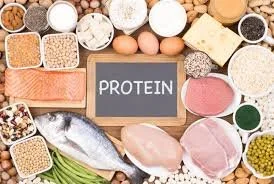The Beauty of Fiber
Why is fiber such a hidden secret to health? Let's explore the health benefits, sources, and recipes that will allow us to more easily incorporate this powerful nutrient into our daily routine.
Fiber is the talk of the town these days and after reviewing the health benefits, you can see why! What I have found is that if you make fiber a priority in your diet, it lends itself to overall improved nutrition. Here is an overview of the health benefits, how much fiber you should aim to include in your diet, and examples of foods high in fiber.
Health Benefits
Heart Health
Lowers cholesterol levels by binding to LDL (bad) cholesterol and helping remove it from the body.
Reduces blood pressure and inflammation, contributing to a lower risk of heart disease.
Blood Sugar Control
Slows the absorption of sugar, which helps prevent blood sugar spikes—important for people with diabetes or insulin resistance.
Helps improve insulin sensitivity over time.
Weight Management
Increases satiety (fullness), helping control appetite and reduce overall calorie intake.
Often found in nutrient-dense, low-calorie foods like vegetables, fruits, legumes, and whole grains.
Improved Digestion
Prevents constipation by adding bulk to stool and promoting regular bowel movements.
Feeds healthy gut bacteria, especially fermentable fibers (prebiotics), supporting a healthy microbiome.
Cancer Reduction Risk
May reduce the risk of colorectal cancer, likely due to faster waste elimination and a healthier gut microbiome.
Some studies suggest high-fiber diets may reduce the risk of other cancers too, though evidence varies.
Healthy Aging
Associated with lower risks of disease (like stroke, type 2 diabetes, and certain cancers) and improved longevity.
How much
For most adults, the general recommendations are:
Women: about 21–25 grams per day
Men: about 30–38 grams per day
These are based on guidelines from the Institute of Medicine (U.S.).
A few notes that can help put this into context:
Many people fall Short - the average intake in the U.S. is closer to 15 g/day.
Both soluble fiber (oats, beans, apples, chia seeds) and insoluble fiber (whole grains, veggies, nuts, seeds) are beneficial, so variety matters.
Aiming for at least 25–30 grams daily from whole foods is a good target for most adults.
If you increase fiber, it’s best to do so gradually and drink enough water to avoid bloating or constipation.
High Fiber Foods
Fruits
2-4g per serving
Raspberries (8g per cup)
Pear (5-6g with skin)
Banana (3g)
Orange (3g)
Vegetables
2-5g per serving
Broccoli (5g per cup, cooked)
Carrots (4g per cup, raw)
Brussels Sprouts (4g per cup cooked)
Sweet Potato (4g with skin)
Spinach (4g per cup, cooked)
Legumes
6-15g per serving: Very High
Lentils (15g per cup, cooked)
Black Beans (15g)
Chickpeas (12g)
Split Peas (16g)
Whole Grains
3-10g per serving
Oats (4g per cup, cooked)
Brown Rice (3.5g per cup, cooked)
Quinoa(5g per cup)
Whole Wheat Pasta (6g per cup)
Barley (6g per cup)
Nuts and Seeds
2-10g per serving
Chia Seeds (10g per oz)
Flaxseeds (7g per 2 tbsp)
Almonds (3.5g per cup)
Pistachios (3g per oz)
Barley (6g per cup)
Protein, the GOAT
It all begins with an idea.
In my mind protein is the hero product of health and nutrition. Protein is vital for nearly every biological process. Whether you're growing, healing, staying active, or just trying to stay healthy, you need enough protein in your diet.
Health Benefits
Tissue Growth and Repair
Protein is a primary component of muscles, skin, organs, and bones.
It helps repair tissue damage and build new tissue, especially after injury or exercise.
Muscle Growth and Maintenance
Especially important for athletes and people who exercise regularly.
Prevents muscle loss during weight loss or aging.
Enzyme and Hormone Production
Many enzymes (which speed up chemical reactions in the body) are proteins.
Hormones like insulin and growth hormone are also made from proteins.
Immune Function
Antibodies that help fight off infections are made of protein.
Without enough protein, your immune system may weaken.
Nutrient Transport and Storage
Proteins like hemoglobin transport oxygen in your blood.
Others help carry vitamins and minerals to where they're needed.
Energy
While not the body’s first choice, protein can be broken down for energy if carbs and fats are not available.
Helps You Feel Full
Protein-rich foods are more filling, which can help with appetite control and weight management.
How Much
Recommended protein intake depends a bit on your weight, age, and activity level, but here are the main evidence-based ranges.
General Guidelines
RDA (minimum to prevent deficiency): 0.8 g per kg body weight
Optimal for most adults (health, satiety, muscle maintenance): 1.2–1.6 g per kg
Active adults / those looking to build or maintain muscle: 1.6–2.2 g per kg
What That Looks Like
If you weigh 150 lbs ( ~68 kg):
RDA minimum: ~55 g/day
Optimal range: ~80–110 g/day
Higher-end (athletes): ~110–150 g/day
Practical Rule of Thumb
Most people do well aiming for 20–30 g of protein per meal, plus a protein-rich snack if needed.
High Protein Foods
Recommended protein intake depends a bit on your weight, age, and activity level, but here are the main evidence-based ranges.
Animal Based Protein
Chicken breast (cooked) (~31g)
Turkey (cooked) (~29g)
Eggs (1 large) (~6g)
Greek yogurt (plain, nonfat) (~10g per 100g)
Cottage cheese (low-fat) (~11g)
Salmon (~25g)
Tuna (canned) (~26g)
Lean beef (~26g)
Milk (1 cup) (~8g)
Cheese (e.g., cheddar) (~25g)
Plant Based Protein
Tofu (firm) (~10g)
Tempeh (~19g)
Lentils (cooked) (~9g)
Chickpeas (cooked) (~8g)
Black beans (cooked) (~8g)
Quinoa (cooked) (~4g)
Peanut butter (2 tbsp) (~8g)
Almonds (~21g)
Chia seeds (2 tbsp) (~5g)


